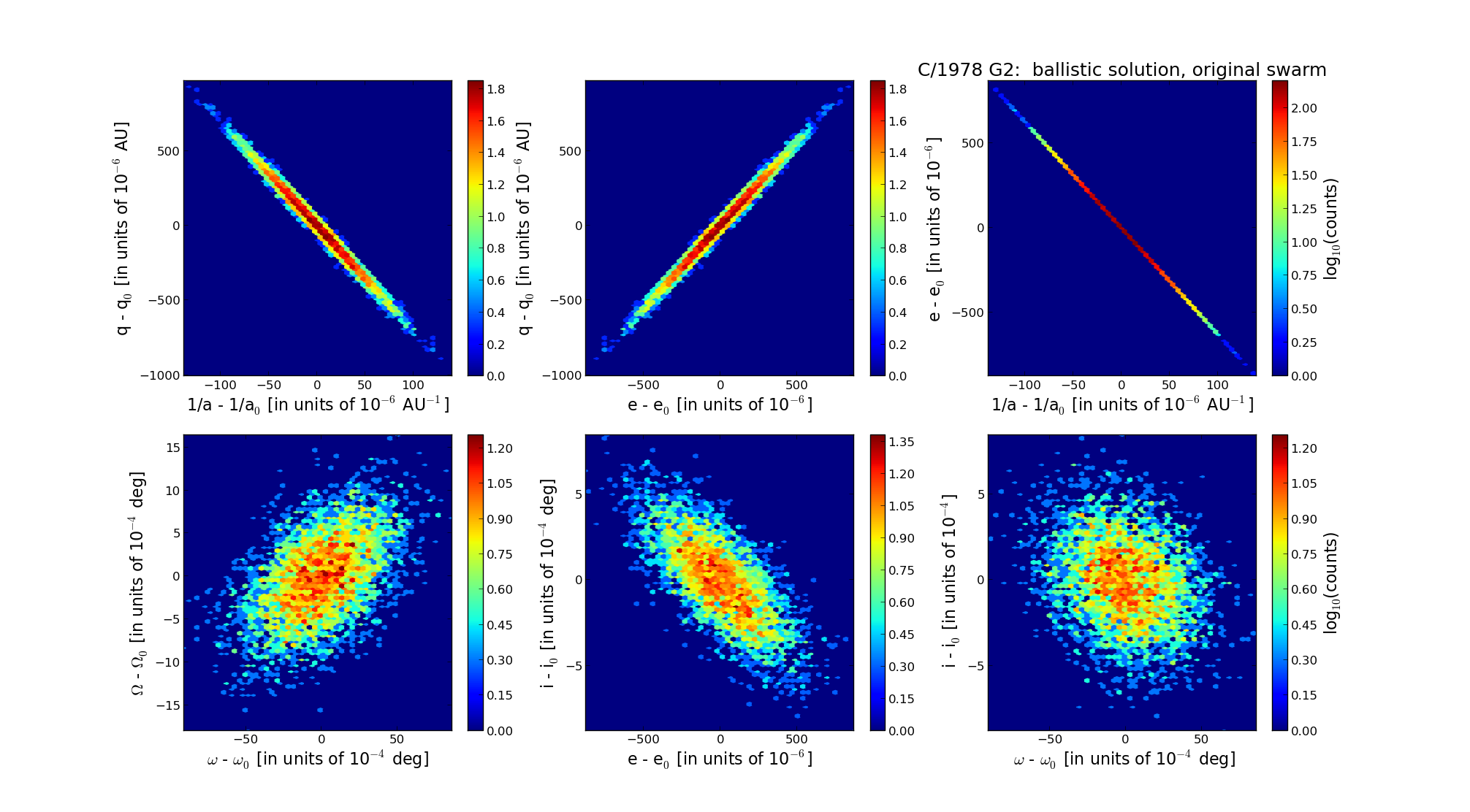| Solar System Dynamics & Planetology Group |
 |
C/1978 G2 McNaught-Tritton |  |
| Solar System Dynamics & Planetology Group |
 |
C/1978 G2 McNaught-Tritton |  |
| number of observations | 7 |
| number of residuals | 14 |
| data interval | 1978 Apr. 12 — 1980 Jan. 23 |
| rms [arcsec] | 0.82 |
| orbit quality class | 1a |
| Epoch (TT) | 19780909.0 | = JD 2443760.5 |
| time of perihelion passage (TT) | 19780824.540076 | ± 0.027455 |
| perihelion distance | 6.28283701 | ± 0.00026742 |
| eccentricity | 1.00213685 | ± 0.00023866 |
| argument of perihelion [deg] | 229.509423 | ± 0.002489 |
| longitude of the ascending node [deg] | 72.215982 | ± 0.000451 |
| inclination [deg] | 153.182919 | ± 0.000230 |
| inverse semimajor axis [10-6 au-1] | -340.11 | ± 37.94 |

| Epoch (TT) | 16710809 | |
| time of perihelion passage (TT) | 19780826.698113 | ± 0.026870 |
| perihelion distance | 6.28038625 | ± 0.00026610 |
| eccentricity | 1.00014083 | ± 0.00023760 |
| argument of perihelion [deg] | 229.651662 | ± 0.002461 |
| longitude of the ascending node [deg] | 72.211404 | ± 0.000457 |
| inclination [deg] | 153.162815 | ± 0.000234 |
| inverse semimajor axis [10-6 au-1] | -22.42 | ± 37.83 |
| Epoch (TT) | 22841014 | |
| time of perihelion passage (TT) | 19780825.628227 | ± 0.027360 |
| perihelion distance | 6.27935179 | ± 0.00026690 |
| eccentricity | 1.00062275 | ± 0.00023752 |
| argument of perihelion [deg] | 229.662065 | ± 0.002455 |
| longitude of the ascending node [deg] | 72.306967 | ± 0.000450 |
| inclination [deg] | 153.149555 | ± 0.000233 |
| inverse semimajor axis [10-6 au-1] | -99.17 | ± 37.82 |